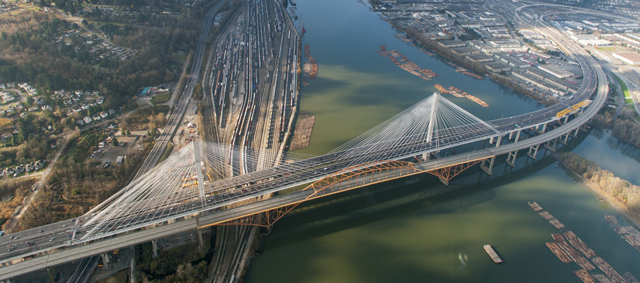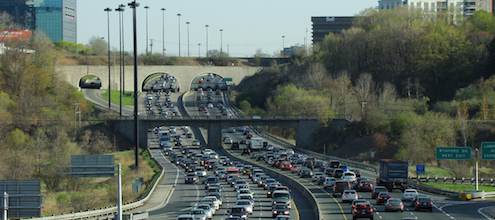
Five ways congestion pricing tackles traffic
On November 2nd, we’re bringing together international transportation experts for our first Google Hangout: How the World Beats Traffic. A big part of the answer is congestion pricing. Still a new idea in Canada, congestion pricing has been used by a number of cities across the globe to influence people’s travel choices and help beat gridlock. But different cities have used different approaches. Here’s a bit of a primer on the top five forms of congestion pricing and how they work.
1. Single-entity pricing prompts drivers to use other routes or travel at other times
This is the most familiar kind of congestion pricing for most of us. We pay these fees as tolls on roads, tunnels or bridges. In Canada, some top examples of priced facilities include bridge crossings in Halifax Harbour, on parts of some Quebec Autoroutes and most recently on the Port Mann Bridge in Metro Vancouver. In particular, Ontario’s Highway 407 Express Toll Route, as well as Autoroute 25 in Quebec have time-variable congestion pricing that can help prevent bottlenecks at busy times. The 407 will be expanding eastward in Durham region. The 407 East project comprises two new toll highways: 412 (formerly known as the West Durham Link) and 418 (formerly known as the East Durham Link). Tolls can cause drivers to select an alternative route to avoid paying the congestion charge (reducing traffic on the tolled infrastructure) and—with time-variable tolls—to choose to drive at a different time. Some may choose to use another mode of transport. Tolling is evolving as technology progresses, allowing for seamless driving through tolled zones. Yes, the days of lines at a tollbooth are over.
2. High-occupancy toll (HOT) lanes make all lanes of traffic move faster
High-occupancy toll roads are a hot topic these days, as more jurisdictions in North America have begun planning and implementing these new or modified HOV lanes, that allow vehicles without the minimum number of carpooling occupants to pay a fee to use the lane. They are popular as they make all lanes of traffic move faster, while giving commuters choices. In Ontario, HOT lanes have been promised in two provincial budgets, while new HOT lanes have just launched along the I-405 (Washington State) and are now being discussed for DC’s I-66.
3. Zone-based pricing encourages travelling downtown by other means (or at other times)
Also called “city centre” pricing, in this approach there is a fee for going in, out, or potentially moving around a super-congested downtown hub. That fee generally goes up during rush hour and down during off-peak times. While Canada has yet to experiment with zone-based pricing, many cities have successfully implemented it. Most famously London, England which used congestion pricing to reduce traffic in a high-traffic zone by as much as 36% in 10 years. The shift is a result of both people travelling at different times and by alternate modes.
4. Distance-travelled charges can increase in price when traffic swells
Also known as pay-per-km fees, distance-travelled charges are quickly evolving as GPS systems integrated with our cars and smart phones are allowing the implementation of more advanced, dynamic systems. In North America, Oregon is actively exploring this form of pricing via their Road User Fee Task Force. They are currently experimenting with a third trial program. Their first pilot found that by increasing the distance-based fees during peak periods, drivers during rush hour reduced their peak-period mileage by 22%. Check out this recent blog on the Oregon Road Usage Charge for more information on the program.
5. Smart parking pricing gets cars parked sooner
We don’t often think about parking as playing a role in congestion, but it does. That’s what time-variable parking pricing or smart parking seeks to address. Apps can inform drivers about the location of available parking, as well as what they cost (as was used in a San Francisco pilot project, though this is not currently widespread). Since it is estimated that 30% of downtown traffic is caused by cars circling to find parking, speeding up the parking process can really help ease congestion. Smart parking is currently being used in Calgary, and is scheduled to be expanded to Edmonton.
There are a lot of different ways that cities can use congestion pricing, and the best approach depends on local details—for example, geography, traffic flow, and public transit. Want to find out more about real life examples of how pricing congestion can help beat traffic? Join our Google Hangout November 2.
Register for How the World Beats Traffic



Comments are closed.